
WEDNESDAY, OCT 25, 2023: NOTE TO FILE

Size (of groups) Matters
A viable decision making system vs. non-viable politics-as-usual
Eric Lee, A-SOCIATED PRESS
TOPICS: GROUP SIZE, FROM THE WIRES, SIZE LIMITS MATTER
Abstract: Discussion/decision making group size is 13. For millions of years humans lived in small groups of trused (with your life) others (20-50, 28 average, range 5-85). You can live in larger groups, for a time, but exceeding limits long term has dissolution (e.g. of empires) as outcome. You can, as an Anthropocene enthusiast, firmly believe that humans can live in groups of millions to billions, and on the Dyson shere humanity will build, ttrillions. By Nature is unkind. Humans don't get a vote as to what works long term. Enjoy life while you still can (or piss and moan, it won't matter).
COOS BAY (A-P) — Submitted as a given:
Our hierarchical political system, at all levels, is lethally dysfunctional and incapable of addressing existential threats (e.g. ecological overshoot, species extinction (Anthropocene mass extinction event), overpopulation, climate change, technology, mass delusion, pollution, nuclear weapons, debt bubble, mob rule…).
To Consider:
What would a potentially viable form of governance, at all levels, look like?
All politics, all organized political systems end. The monetary culture, the now global modern techno-industrial society, ends. Life as 99.999% of humans now know it ends whether after 200 or 600 years on the downslope.
No one will end it. The expansionist dynamic is self-terminating, like that of a metastatic cancer, and will come to look like nothing other than a global expanse of ruins and stratigraphic layer of microplastics and radionucleotides.
A damaged biosphere will persist. Will there be humans on it? Perhaps, but there will be no modern techno-industrialized humans, though their ancestors may have been such denormalized animals.
Any viable form of human will be non-expansionistic, will be endeavoring to renormalize as a K-strategist having a viable K-culture and living in a complex matrifocal society (civilization) that is able to persist long term.
All societies, from communities of families, to districts of communities, to watershed management units will limit their populations, both in size of groups lived in, and the number of interacting groups (communities, hamlets, villages, camps, bands) as determined by what works long term. What does Mother (the nature of things) say works long term?
Nature (the nature of things, reality, the planetary life-support system) determines what works. Humans can listen to Nature, but do not get a vote. Those who listen will learn about what works for humans. Our ancestors, for 375k years, lived in groups (bands, communities) of 20–50 (range 5–85, average 28).
Those humans who seek to renormalize would be wise to consider what was average and that bigger may prove too problematic for recovering denormalized humans. Listen to Mother. “To think is to listen. Listen.” Message: live with all due sapience within limits.
To exchange genes (exogamy, mate selection), groups (5–50) must interact. The number of groups is limited by walking distance to a meet up place, and by our evolved ability to interact, as are the number who can frequently interact within a community.
Exceeding limits is non-viable. K-strategists live within limits. We moderns exceed multiple limits (and are proud of it) for a time (overshoot debt will be paid).
To make decisions, group size is also limited to no more than 13 (8–11 optimal). The decision makers would be the “adults in the room” (not too young/old/unabled). A group of 28 may have 8–11 full-function adults in it.
Human biology enables decision making groups that are not too big or small to work well enough mostly, and to select for viable outcomes (adults in a K-culture serve posterity, the 100th generation ahead).
If all interacting communities (2–13) need to make decisions (and all do), then one to a few representative from each community would meet. This limits the number of interacting communities, the basic level of a social system in a complex society, to a maximum of 13.
Members of a society may have a name for themselves, or others will name them. For this level of social complexity above the community level, I use the name of ‘district’ to refer to a society of up to 13 (optimal 8–11) largely self-sufficient interacting communities.
Three neighboring districts could form, as needed, a trilateral commission of 3–4 representatives to make decisions, to allow the three to cooperate such as to maintain trails/roadways. They would self-organizing into a tri-district, a level of complexity above a district.
The people living on North Sentinel Island (60 sq km, 23 sq mi) still live within limits as no one ever leaves the island and anyone who comes (and stays too long) is put to death. They must be living within the island’s carrying capacity as the centuries pass. They live in 10 communities. Population unknown, but likely 250. This is a viable size as they have lived apart from other humans for centuries. They do not degrade/destroy their habitat.
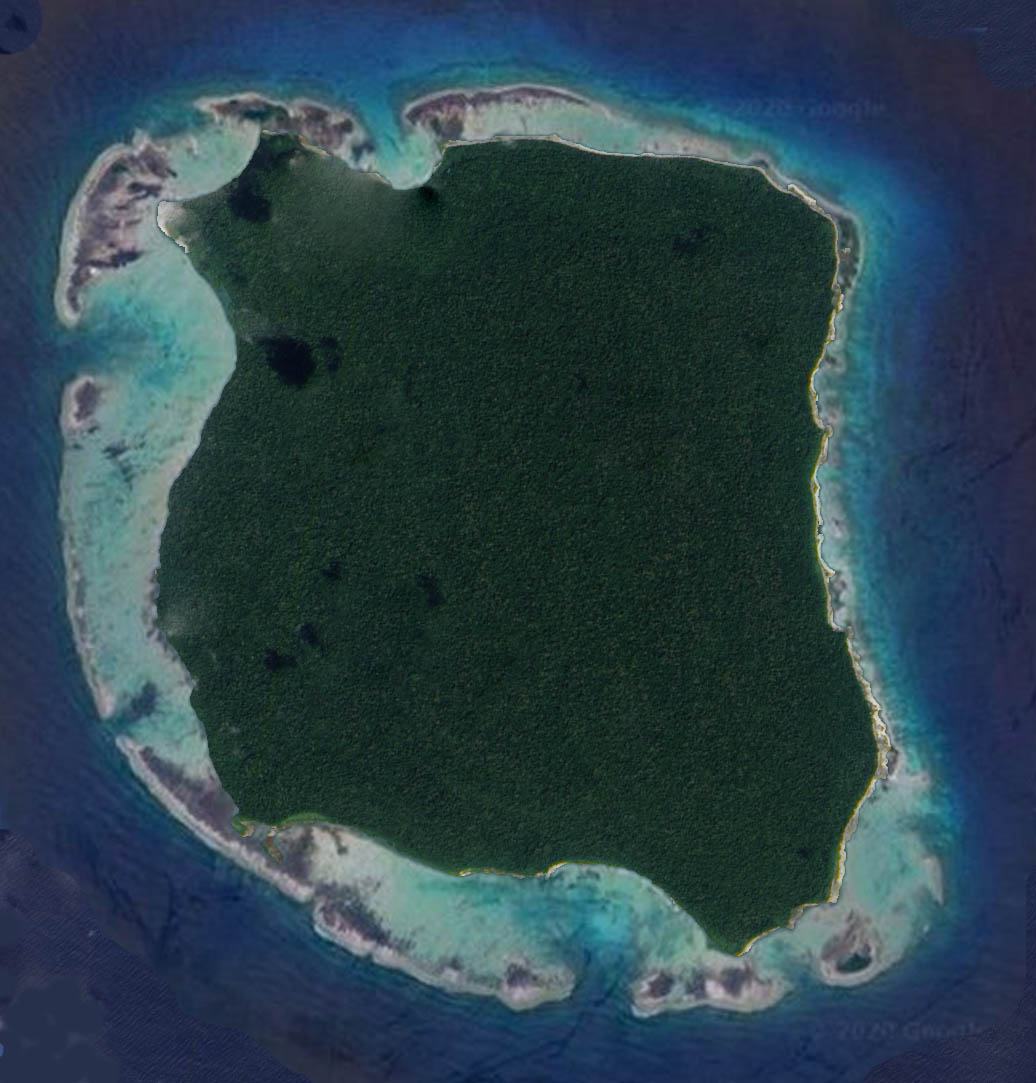
They intentionally isolate themselves from us (for some crazy reason). The people of North Sentinel Island live in a single district sized society. The next level up would be complex societies of up to 18 interacting districts (six tri-districts) living within physically determined boundaries (e.g. a valley, shore, or watershed/subwatershed) that thereby differ from political boundaries. I call such complex societies ‘watershed managements units’ (WMUs) and note that the long term viability of larger societies is not as evidenced, but as asserted. WMUs may be the largest viable form of society, though larger associations of WMUs arounnd high energy sources or trade hubs are possible (a collection of WMUs may form a city, but no children would live in the city, so WMUs would be home to full function societies.
North Sentinel Island would be a small (1 district) watershed management unit, entirely, in this case , self-sufficient. From above, there is no evidence of “development.”
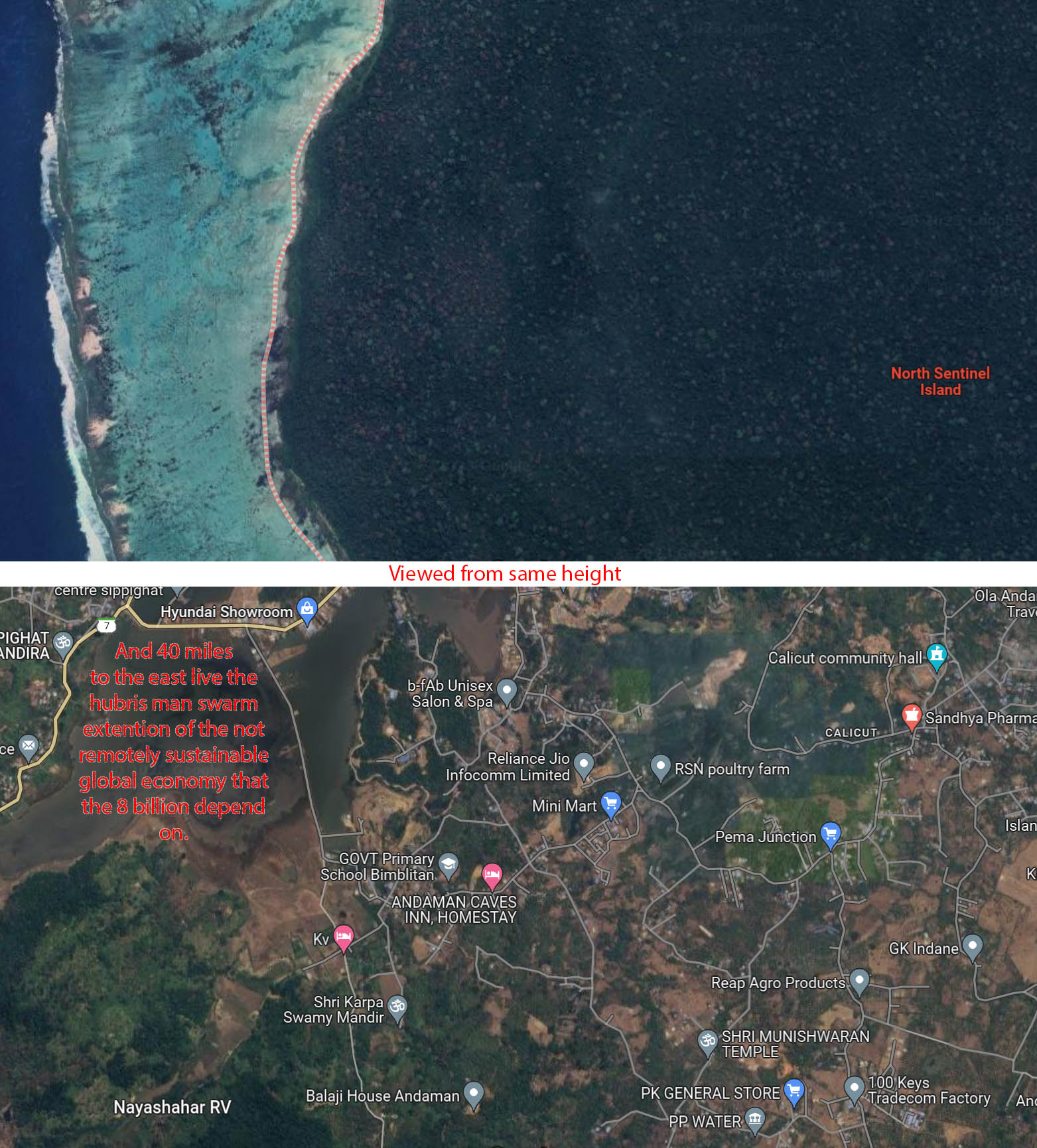
Human biology allows for a society of frequently interacting communities (a district, usually 8–11 communities, range 5–13) within a district that may interact by chance more than once a month (e.g. the 10 on North Sentinel Island).
Given an optimum community size of up to 28 people for renormalizing non-expert humans, a primary society, a district of 5–13 communities, would number 140 to 364 individuals, which is sub-optimal for mate selection, exchanging memes, and diversity benefits.
One district is viable, but not optimal. A viable society, a WMU of districts would be 3–11 (range 1–18) interacting districts numbering 400 to 4000 citizens (range 140 to 11,700 maximum such as may be possible at a trade hub or high energy source). Any larger and societies have to build prisons and support full time police forces (and lock doors…) due to too few repeat interactions in overcomplex societies that do not select for trust (but select for cheaters).
Each district could interact by planned intent with other districts within a watershed management unit (WMU), perhaps monthly. Each WMU would also interact with neighboring WMUs. The number of shared and crossable boarders is typically 2–4, and interactions may be annual. What happens spontaneously is that 2–4 WMUs share a rendezvous site. Each WMU could in turn host a by invitation gathering.
To transition from our condition of overcomplex society, organized decentralization begins with the smallest viable “political” unit, the face-to-face round table, with no more than thirteen deciders. If there are thirteen communities or less in a valley, each could agree to send a member to a Valley Council to consider valley-wide issues. The 13 number should be viewed as a maximum to avoid. In K-culture, bigger is not better.
In a big valley, those on each side of a river might self-organize to live in up to 13 communities forming two districts, and 4–6 representatives from each of the two could meet to make valley-wide decisions.
And in a bigger valley, each of two sides could form into upper and lower regions of up to 12–13 communities, or up to 50 communities total that would define the maximum number of communities in a watershed management unit (WMU), a largely self-organized and self-sufficient society that is optimally sized, i.e. is big enough and bio-socioeconomic-politically viable for our species, one able to remain functional as the millennia pass.
Up to 13 watershed management units (WMUs) in a bioregion could form a regional decision making group of representatives from each WMU. Exceeding limits is against ‘The Law’, the natural laws that limits that humans to doing what works long term, i.e. to doing what they don’t get to decide on (e.g. the carrying capacity of the environment they inhabit), but must iterate towards understanding to avoid non-viable outcomes, e.g. conquest before collapse.
If 50 is a maximum at the community population size level, and “political” decision making councils are a maximum size is 13, then a viable design for a civilization would factor in these and all other limits.
Listen to Nature and note that a maximum community size for renomalizing humans is 50, and maximum decision making group size is 13, with 20–30 and 8–11 being in the optimal range. The ‘bigger-is-better’ meme must be moderated, must be memetically replaced with ‘enough’.
Discussion group maximum size of 13 is per school of hard knocks. All 8–11 are presumed to be the adults in the room, excluding sub-adults and those who never achieved full adulthood, or with advanced age, have lost functionality and have retired.
Assume at most half of any communities are full function adults, with some more functional than others such that a hierarchy of merit self-organizes by consensus.
For ten years I attended weekly meetings of the Literati Club, a wholly unaffiliated citizen’s group whose existence was the outcome of spontaneous social auto-organization. The room could have held more than 13, but never did, and if members seemed too few, others were invited. As the number approached 13, no one invited others to join. This was wholly without anyone making a decision not to. All were just being normal humans and going with what worked. What works is not determined by humans.
Optimal group size: 26–30, inclusive of ‘matron and maid, The speechless babe, and the gray-headed man’. Groups of up to 50 (23 deciders) may work for a time without subgroups, factions dominated by one or a few who marginalize others, forming. The too large risks pushing the tipping point from viable to non-viable group size, and are well above optimal group size (20–30) with 8–11 adults in the room. Our r-culture seeks maximums and so selects for failure.
Above the level of WMU there could be no viable society where humans are born, grow up in, and reproduce in. As a tridistrict is above district size, three watersheds may meet to consider and make decisions concerning the three. For example, in Oregon, the Rogue River would be three WMUs, the Upper Rogue, Middle Rogue, and Lower Rogue WMUs. They share a river in common, and 3–4 representatives from each could meet as needed by calling a counsel.
The maximum number of WMUs share a common region would be 13 and the region would be defined as a ecoregion or sub-ecoregion. Up to 13 ecoregions could form a bioregional management unit. I live in what would be the Coos WMU in the Pacific NW Coastal Mountain ecoregion defined by apolitical boundaries. The other ecoregions are subdivisions, for systemic management purposes only, of the Pacific NW Bioregion (Cascadia Bioregion).
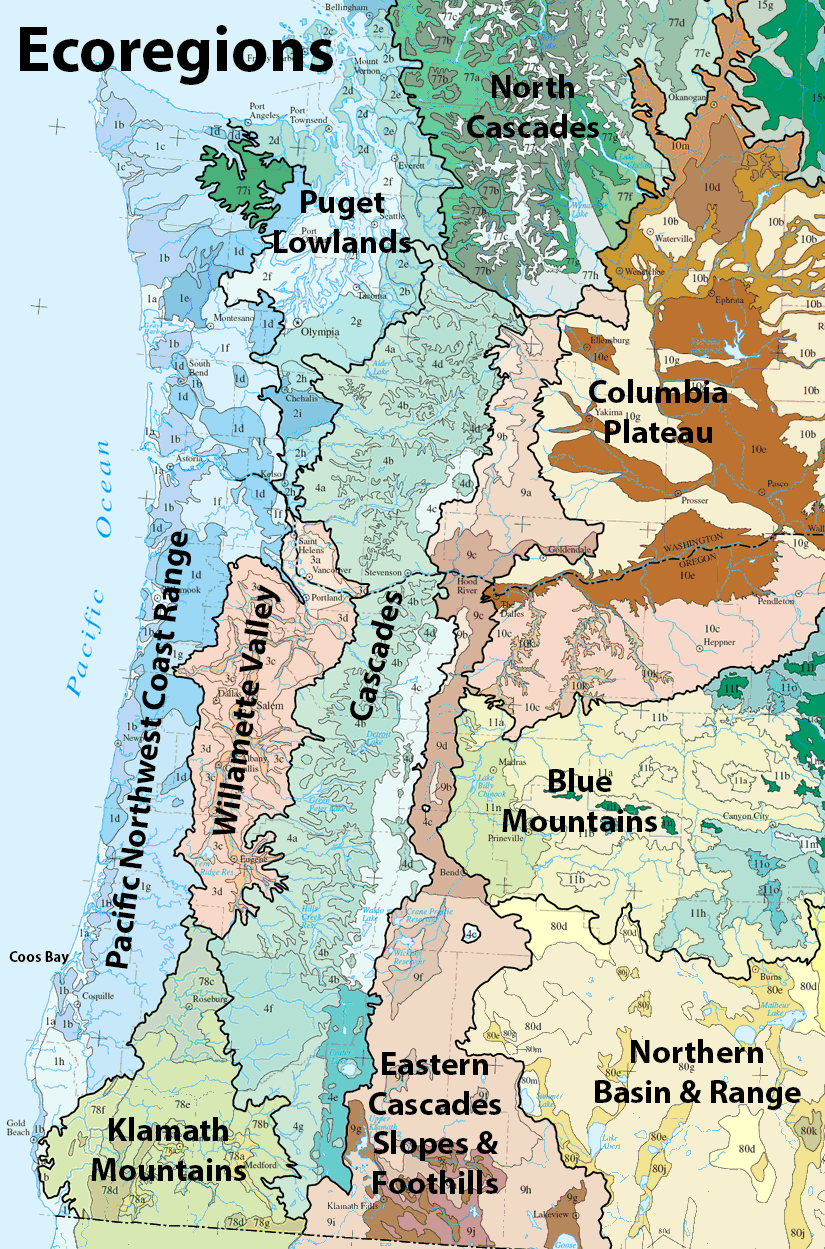
If more than 13 ecoregions, then a Northern Pacific NW Bioregion and Southern Pacific NW Bioregion would be needed due to human limitation. The Columbia River would be the obvious border. All levels above WMU, would not manage human behavior, but they of lower decision making groups on down to managing, by mutual coersion mutually agreed to, MWUs. For example, if there was a Bioregion level disaster (Cascadia earthquake/tsunami), a region-wide coordinated response would have the better outcome than a ‘each WMU for themselves’ response.
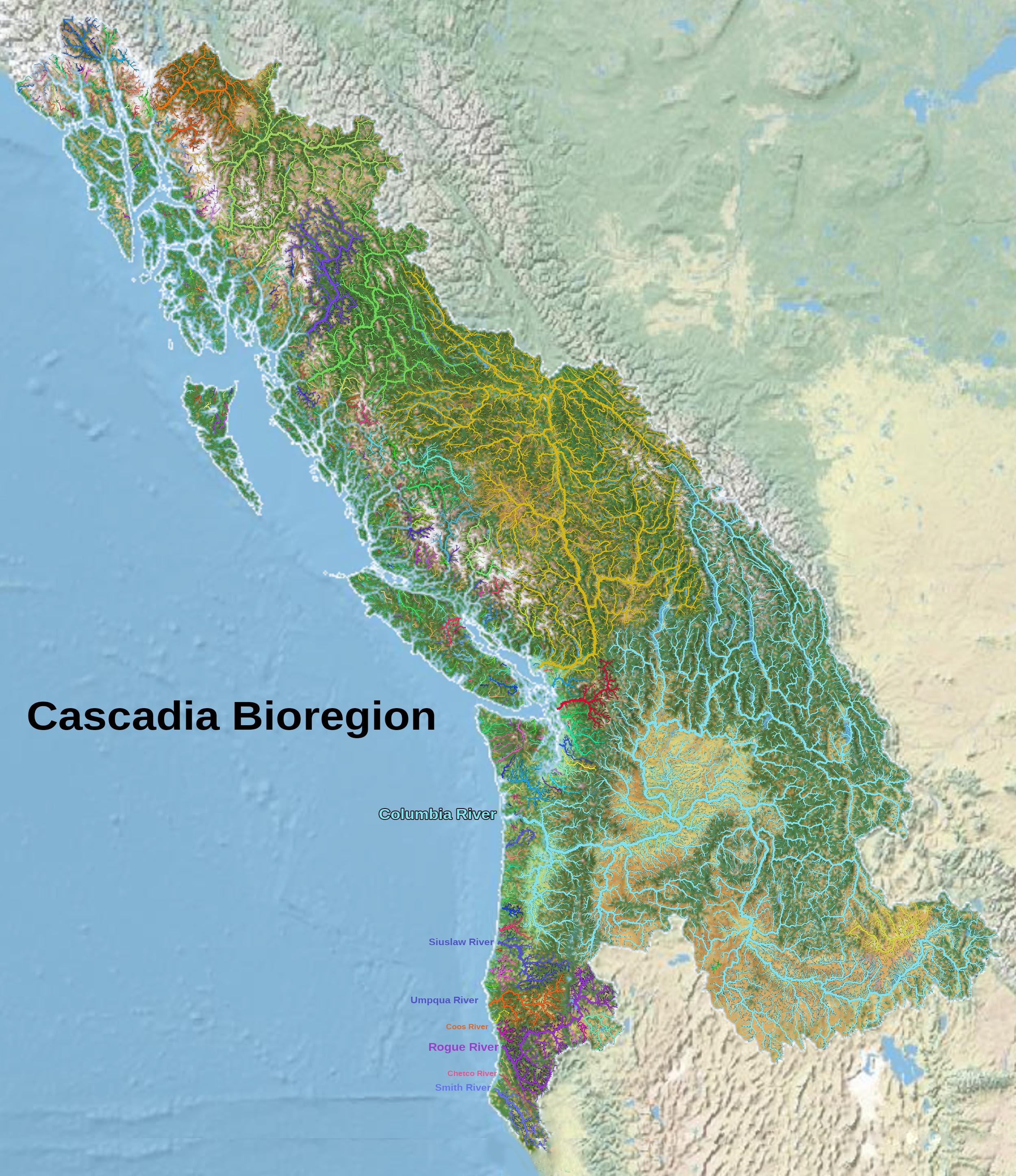
And systemic management would not stop at the bioregion level. Continental regions would have subregions that would have subregions that would have subregions at the bioregion level. Again, solely management entities well above the level of individual human behavior management by the Mothers.
Gaia, and Gaia governance, would have an “Ecolate” level subdivisions having sub-ecolate or sublate management/study regions that would include multiples bioregions of ecoregions of WMUs. All are systemic management entities having a biophysical basis, and not political entities serving human short-term self interests that select for failure.
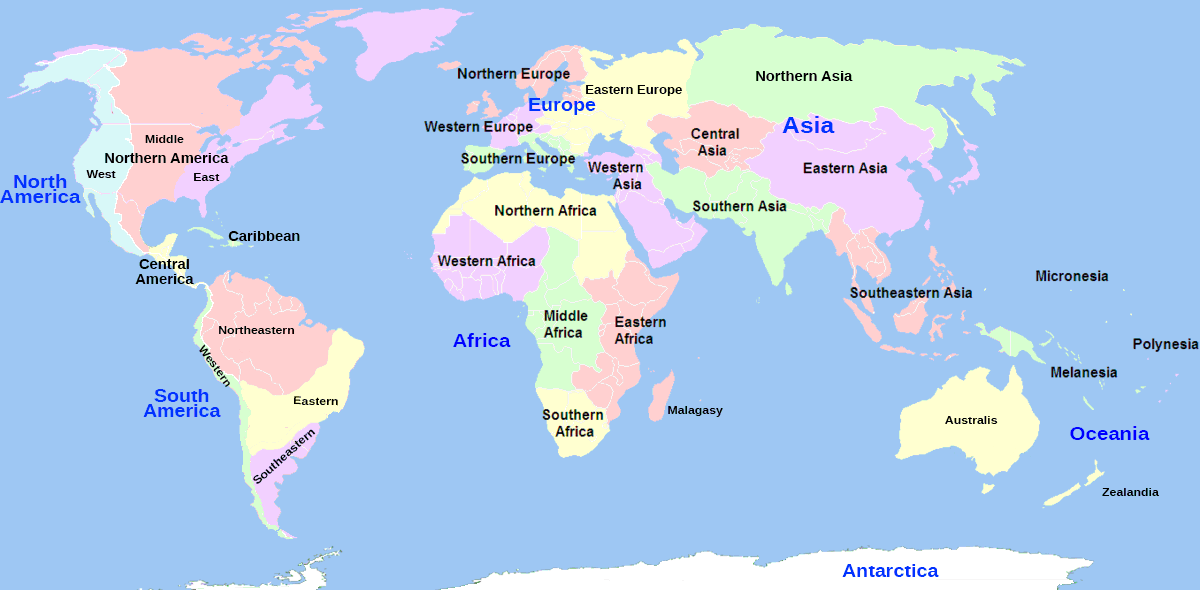
There are 6 habitable ecolates and 30 sublates. Ask a world traveler where they are from and ecolate, sublate, bioregion, ecoregion, and WMU may be mentioned (and possibly the district, community, and family unit too, perhaps in reverse order stating with family farm/ranch, e.g. ‘I’m a Cartwright from the Ponderosa, in…)’.
The Political (Representatives) Control System
All who serve as representatives, at any level, could be depowered by their community and replaced. An individual having no community could not represent one. Those at the highest decision making level, who discuss Gaian governance, if their position as community representative (or any level between) is withdrawn, then they ceases to exist at all higher levels too.
There would/could be no careerist, professional leaders at any level, and as communities would be matrifocal, no Lord Man types, no alpha-male wannabe dictators would make community representative level, let alone higher.
Renormalized societies would again become matrifocal. Some men could come to be viewed as Honorary Mothers, and would not be excluded from serving as a representative. Our current patrifocal form of civilization of Omniscient Conquerors is non-viable. Expect a change in form for civilization to be viable.
For every Princess, there would be a Machiavelli to define (by best-guess, evidence-based, systemic inquiry) what works to manage complex systems at all levels. In a WMU of 12 communities as 1 district, there would be two levels: community and WMU governance.
Each community would include more than one mother, about half being mothers or potential mothers. The Law of each community is: ‘If mama ain’t happy, ain’t nobody happy’ and the corollary, ‘If grandma ain’t happy, run!’, is the de facto reality of politics per about six million years of hominin evolution (not withstanding the last 50k years of patrifocal expansionist culture).
To renormalize, we must again obey The Law. In modern culture, some women aspire to become honorary men, e.g. heads of state and CEOs, but in a viable form of civilization, there would be no society above what is bio-socially viable for our species long term. There will be no social systems, complex societies, with populations larger than 2,500 living in up to 50 groups of 50 people, because, per the bio-socio-nature of our beast, more than that is non-viable, until proven otherwise, for renormalizing humans.
This is, per best-guess, The Law. Within small groups, the Mothers will have de facto power. Men may be organizers, and if there is a threat to the community or an emergency (e.g. a fire), they will be on the front line and may appear to be in command and control, but the Mothers will have veto powers. If the men come to a consensus, and the Mothers have issues, they will rethink their plans. Normal, aka functional and viable, societies at the community level work (except where the biophysical economy is almost entirely dependent on men going further from home to ‘bring home the bacon’ than women with children can, in which case the society can, but need not, become patrifocal, an outcome the society, with conscious intent, would be wise to prevent).
Because Mothers have better things to do than sever as representatives, especially beyond the WMU level, I would expect the Mothers to willingly, by intent, to include one or more ‘honorary Mothers’ within their circle of community decision makers, and favor asking them to go to represent the community at WMU desision meetings (again, Mothers have better things to do and be concerned with, have veto power over any representative. Managing WMU affairs is boring, and so they will tend to let the men do it. At the WMU level, maybe half the representative will be men, and in higher proportion on up the hierarchy of decision makers. At the highest level of global governance, most or even all may be men (their women let them so serve), but at any time, the Mothers of their community can take them by the ear and lead them away from their position on the Council of Gaia.
What I envision is a system that works, and what works has nothing to do with me thinking something will work. What works is determined by Nature, the nature of things in complex systems, i.e. Mother, whom the Mothers are, by nature, more aligned with than men. Women are less posterity blind than men, more long-term thinkers whose worldview/mindset can be nature centric.
Modern cultures are human centric and non-viable. Nature centric culture may be non-viable, but being nature centric is a precondition for becoming viable long term.
